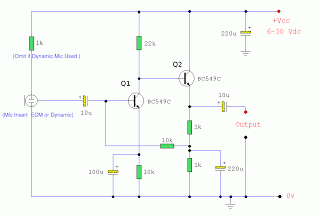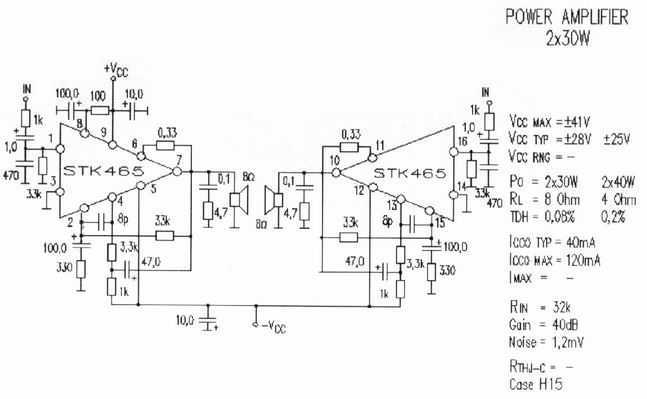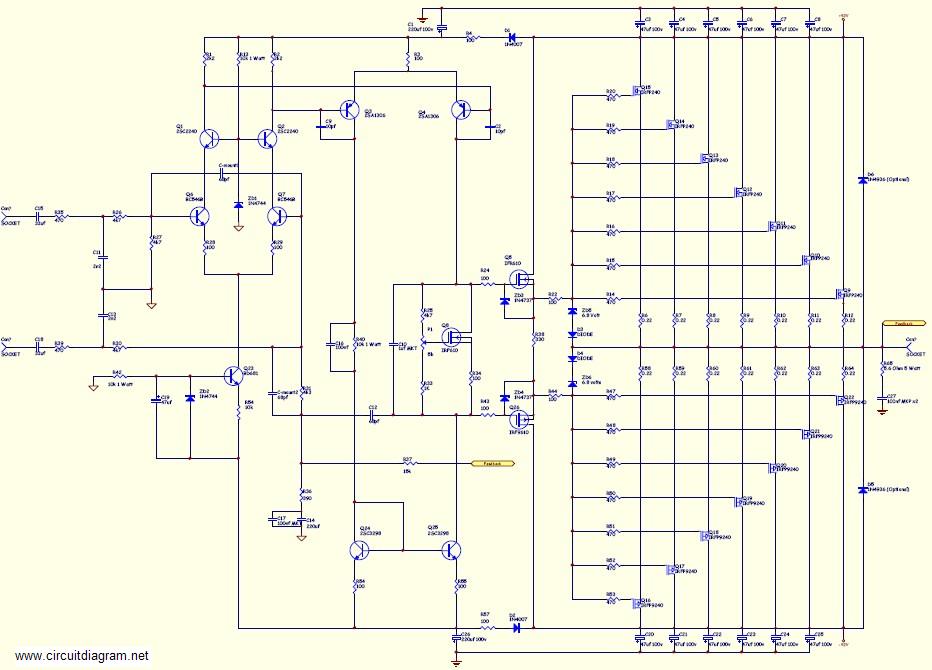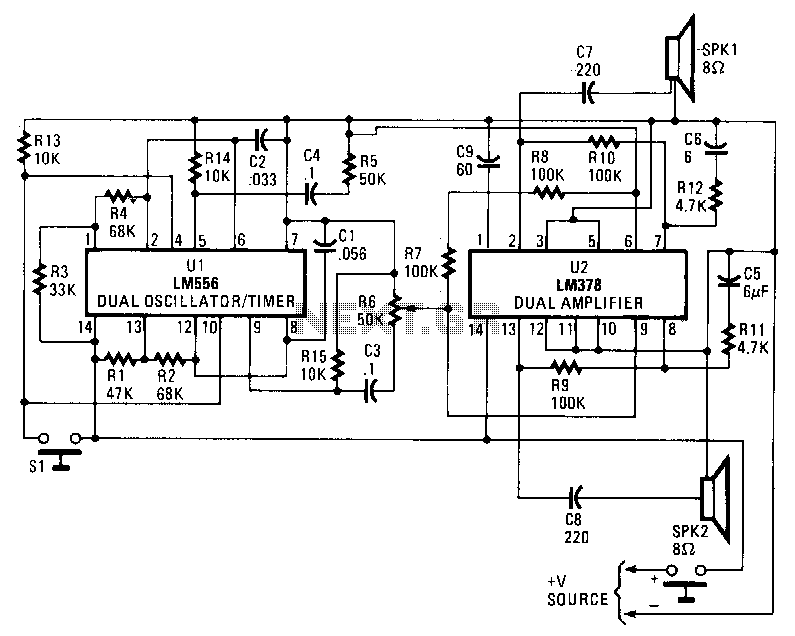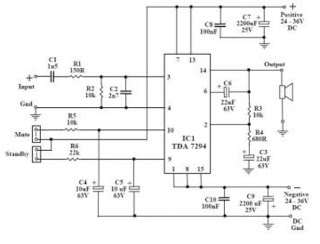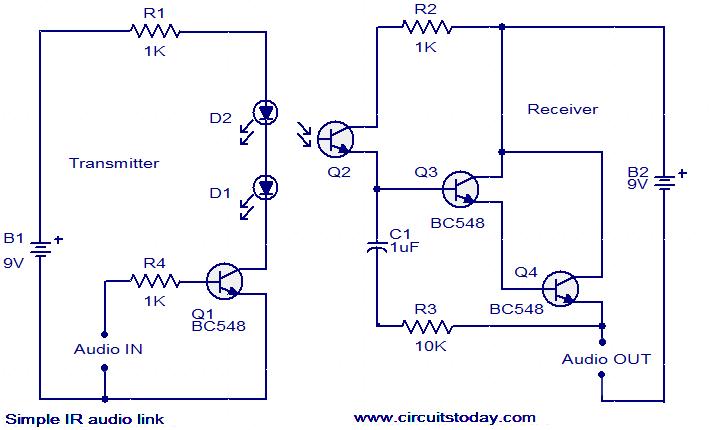
Audio Car Stereo Audio Amplifier with TDA1553CQ
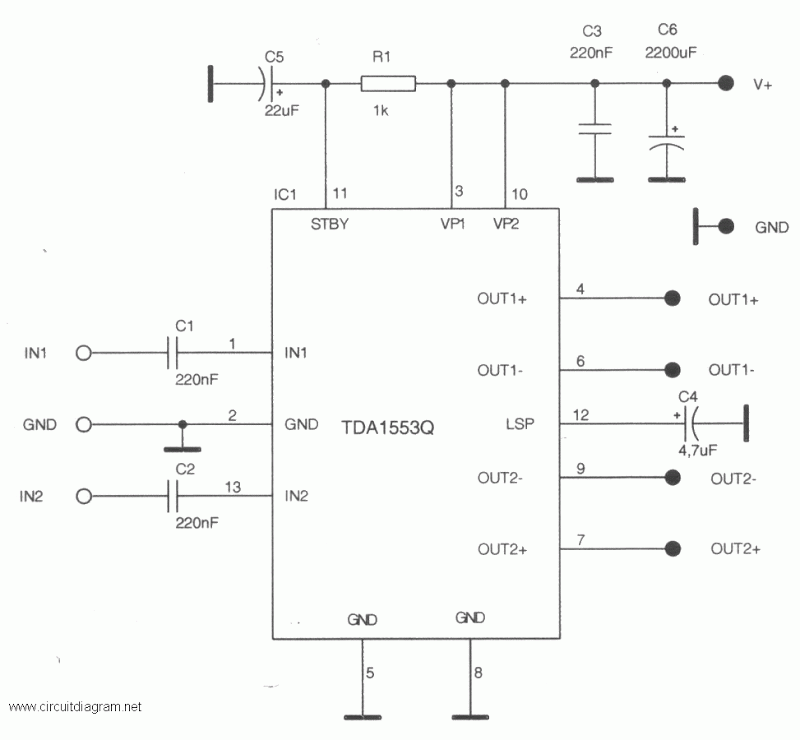
When a short circuit to ground occurs, causing a DC voltage across the loudspeaker to be greater than or equal to V, an integrated protection circuit activates. This circuit limits the DC voltage across the loudspeaker to a value less than or equal to V. Pin 12 monitors the status of the protection circuit, which can be used for diagnostic purposes. If any output is short-circuited to ground while in standby mode, switching the circuit to mute or operational states becomes impossible. In this situation, the supply current is restricted to a few milliamps.
The described circuit features an integrated protection mechanism designed to safeguard the loudspeaker from excessive DC voltage, which could lead to damage or failure. The activation of the protection circuit occurs when a short circuit to ground is detected, resulting in a DC voltage across the loudspeaker that meets or exceeds a specified threshold (V). This mechanism is crucial in preventing potential damage by ensuring that the voltage is limited to a safe level (less than or equal to V).
Pin 12 serves a dual function; it not only detects the operational status of the protection circuit but also provides valuable diagnostic information. This monitoring capability is essential for troubleshooting and maintenance, allowing engineers to assess whether the protection circuit has been triggered due to a fault condition.
In scenarios where the circuit is in standby mode and a short circuit occurs, the system's ability to transition to mute or operational states is compromised. This design choice prioritizes safety and reliability, ensuring that the system cannot inadvertently enter an operational state that could exacerbate the fault condition. Instead, the supply current is intentionally limited to a few milliamps, minimizing power consumption and reducing the risk of further damage until the fault condition is resolved.
Overall, this protection circuit is an integral component of the loudspeaker system, enhancing its durability and performance by effectively managing fault conditions and preventing damage from excessive voltage.When a short-circuit to ground occurs, which forces a DC voltage across the loudspeaker of >= V, a built-in protection circuit becomes active and limits the DC voltage across the loudspeaker to <= V. Pin 12 detects the status of the protection circuit (e. g. for diagnostic purposes). If any output is short-circuited to ground during the standby mod e, it becomes impossible to switch the circuit to the mute or operating condition. In this event the supply current will be limited to a few milliamps. 🔗 External reference
The described circuit features an integrated protection mechanism designed to safeguard the loudspeaker from excessive DC voltage, which could lead to damage or failure. The activation of the protection circuit occurs when a short circuit to ground is detected, resulting in a DC voltage across the loudspeaker that meets or exceeds a specified threshold (V). This mechanism is crucial in preventing potential damage by ensuring that the voltage is limited to a safe level (less than or equal to V).
Pin 12 serves a dual function; it not only detects the operational status of the protection circuit but also provides valuable diagnostic information. This monitoring capability is essential for troubleshooting and maintenance, allowing engineers to assess whether the protection circuit has been triggered due to a fault condition.
In scenarios where the circuit is in standby mode and a short circuit occurs, the system's ability to transition to mute or operational states is compromised. This design choice prioritizes safety and reliability, ensuring that the system cannot inadvertently enter an operational state that could exacerbate the fault condition. Instead, the supply current is intentionally limited to a few milliamps, minimizing power consumption and reducing the risk of further damage until the fault condition is resolved.
Overall, this protection circuit is an integral component of the loudspeaker system, enhancing its durability and performance by effectively managing fault conditions and preventing damage from excessive voltage.When a short-circuit to ground occurs, which forces a DC voltage across the loudspeaker of >= V, a built-in protection circuit becomes active and limits the DC voltage across the loudspeaker to <= V. Pin 12 detects the status of the protection circuit (e. g. for diagnostic purposes). If any output is short-circuited to ground during the standby mod e, it becomes impossible to switch the circuit to the mute or operating condition. In this event the supply current will be limited to a few milliamps. 🔗 External reference
